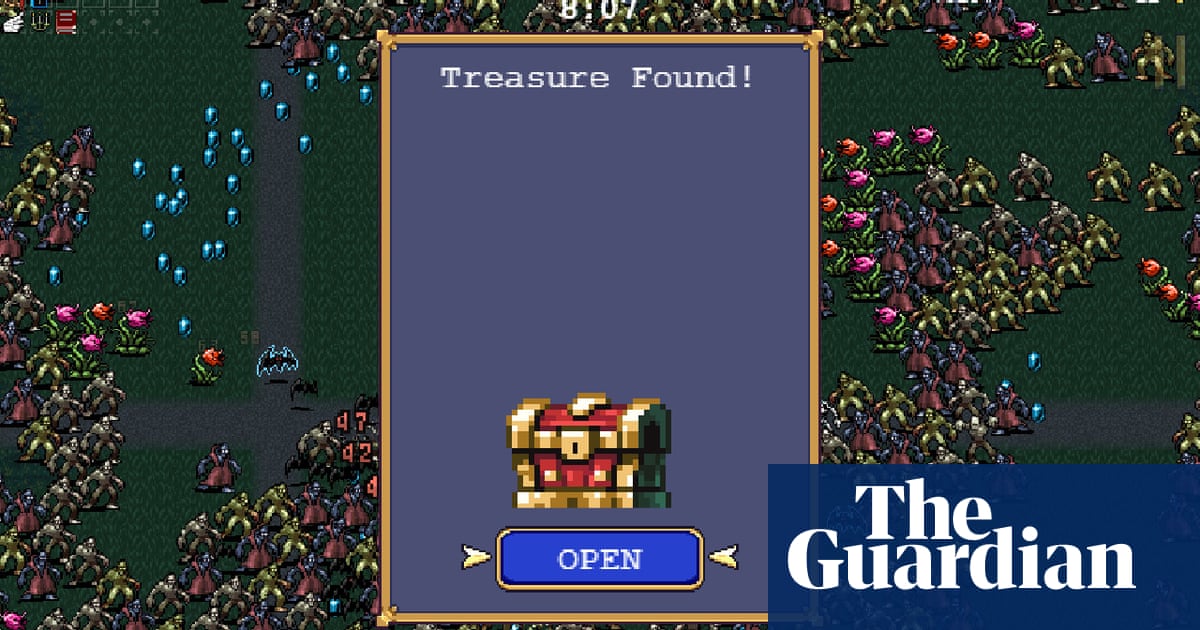
Until the final month of his life, there was one film that George A Romero never mentioned to his wife.
The couple were sent a copy of The Amusement Park three weeks before his death in 2017 by the curator of a retrospective planned in Torino. It was a public information film about ageism but the charity that commissioned it decades earlier had been so disturbed by the final product they cancelled the release and shelved the prints.
Suzanne Desrocher-Romero was stunned by what she saw. Her husband less so. “George thought it was really nothing,” she says. “It was meant to be a community service film. He just didn’t think it was part of his world. In fact, it’s probably more Romero than all of the other films.”
Shot over three days in 1973 with a cast of primarily volunteer actors, The Amusement Park unfolds at West View Park, a 1905 amusement park, now defunct, where the Rolling Stones once played.
It presents an eerie twilight world – not quite horror but laced with oppressive menace – bookended by direct appeals to the camera from 70-year-old Lincoln Maazel. Through him, we navigate a funfair where elderly visitors pawn heirlooms at a rip-off rate to gain admission, only to be turned away from certain rides, have their pockets picked and find themselves scapegoated for minor accidents.
One “ride” is an overcapacity care home in disguise. Relentless discrimination transforms Maazel from a hopeful, dignified man into a broken and bloodied hermit.
“I could see his future in this film,” says Desrocher-Romero. “I could see Dawn of the Dead. George never really thought he had a style but when I see The Amusement Park, I see style. I see Romero. It’s comfort food but serving up something uncomfy.
“His natural state was social commentary and his natural state was to be a film-maker. You could see it with his cutting, the editing and the way he shot it.”
Romero made the movie five years after his breakthrough, Night of the Living Dead, and a few years before its follow-up, Dawn of the Dead. The three films he made in the early 70s were not successful: a romantic comedy, a feminist witchcraft drama and a horror about a bio-spill epidemic. Funding was proving tricky and paid gigs hard to decline. Plus, he had some form with infomercials aimed at a particular demographic: one of Romero’s first jobs was a dozen shorts for Mister Rogers’ Neighbourhood, including one about how lightbulbs are made and another in which Rogers has a tonsillectomy (which he later called “the scariest film I’ve ever made”).
The Lutheran Service Society of Western Pennsylvania (a sort of Protestant precursor to meals on wheels) might have eventually regretted the commission, but they were offering an opportunity for Romero to make the kind of biting satire at which he excelled.
In the end, The Amusement Park was the director’s only feature-length work-for-hire. But it easily rivals his best-known films when it comes to being surreal, unsettling – and direct. It ends with a challenge delivered straight to camera by Maazel, who cautions the audience that they are “separated only by the passage of time” from the victims whose horrendous fate they’ve just watched. “Consider taking some positive action while you are young enough to be a positive influence. I’ll see you in the park someday.” (Maazel himself lived to 106.)
It’s an extraordinary moment: a fourth-wall break that today feels like Romero himself shaking you awake from beyond the grave. His widow believes it’s just as relevant now as it was half a century ago.
“This pandemic shone a light on the fact that a lot of our elderly [people] are tucked away in these places that are kind of horrible,” she says. “They got wiped out because they weren’t treated as precious treasures, they were just treated as old.”
The restoration and release of The Amusement Park is the first project of Desrocher-Romero’s newly formed George A Romero Foundation, which seeks to support new indie horror film-makers, as well as to elevate Romero’s legacy.
“They put George in a box,” she says, “He was ‘the zombie director’. He did genre films, but he was way more diverse than that. I would like to take him out of the box and show him as an important American film-maker.”
He was a “news junkie”, she says, compelled to ensure his films were “about something”. To underestimate him was to miss out on a lot – as she very nearly found. The couple met in 2005, when the director visited the Toronto hotel where Desrocher-Romero was bartending. Land of the Dead was in post-production and he invited her to see a rough cut. A Louisa May Alcott fan, she was worried that it wouldn’t be her thing, but went along despite initial reluctance. “I had fun. And I had fun the next time, and I never looked back. It was incredible.”
Acting as caretaker for Romero’s legacy is the best way to keep him present, for everybody, she says. “I miss his laugh every day.”
The Amusement Park is available on Shudder.












